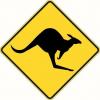Iím always aware of the number of tools and the number of processes used for a task. I have been using this method for a few years now. I havenít done any tails for a while and decided to give myself a little practice because I have a project coming up. I thought to share as it may be useful to some. The first 2 photos show the crate material used. I cut in in half using my 10 point backsaw set one piece on the end of the other and marke with a pencil line. The next photos show setting the saw by thinking 11:55 or 12:05 for the other end. Saw down to the line by eye and check with a square if you wish. The next photos show all of the cuts done by eye. I next chisel the waste being careful to cut to the line an leaving it. TO BE CONTINUED.
Jim





 Reply With Quote
Reply With Quote





